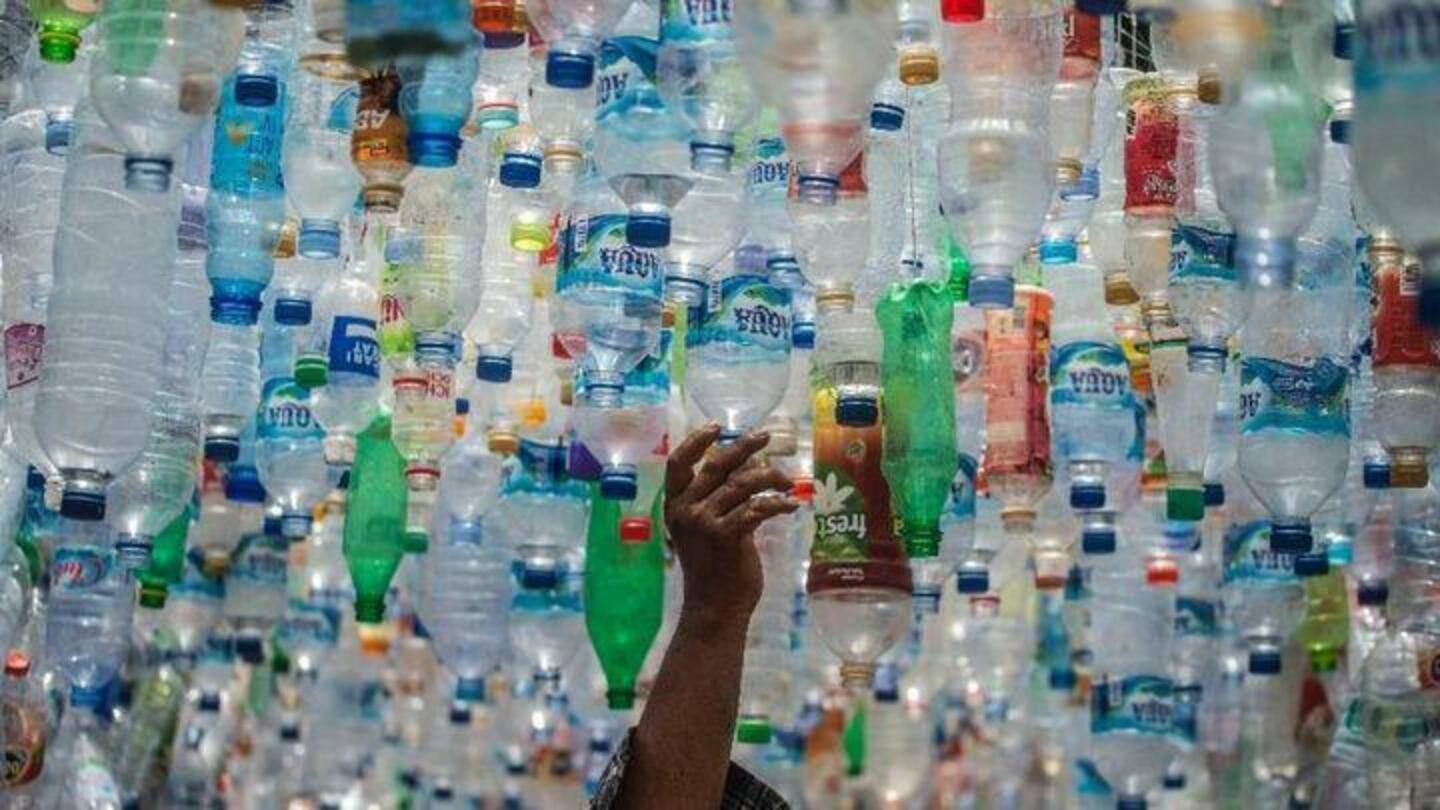
"Miracle material" can efficiently convert plastics into sustainable fuels
What's the story
Researchers from the University of Cambridge have developed a system that can convert plastic waste and greenhouse gases into sustainable fuels by using solar energy. The two waste streams were simultaneously transformed into two chemical products, the first time that it has been achieved in a solar-powered reactor. The "miracle material" refers to perovskite, which has the potential to revolutionize the solar industry.
Context
Why does this story matter?
Perovskite serves as a promising alternative to traditional silicon-based solar cells since they are more tunable and cheaper to manufacture. Last year, scientists surpassed the 30% efficiency barrier of silicon solar cells for the first time by combining them with perovskite, breaking former records. However, achieving the simultaneous conversion of both these waste streams has been a challenge, until now.
Study
Plastic bottles were converted into products used in cosmetics
The perovskite-based solar reactor simultaneously converted carbon dioxide into syngas, a building block for sustainable liquid fuels, while the waste plastic bottles were converted into glycolic acid, which is widely used in the cosmetics sector. What makes it even more interesting is that the solar-powered reactor can be tuned to produce different products by changing the type of catalyst used.
Development
Changing the catalyst resulted in different end products
The reactor had two separate compartments: one for plastic and one for greenhouse gases. The light absorber used for the conversion was based on perovskite. Different catalysts were integrated into the light absorber and by changing the catalyst, the researchers could then change the end product. Furthermore, the rate at which these products were produced was higher than conventional photocatalytic carbon dioxide reduction processes.
Official words
Solar-driven conversion of waste products is a sustainable approach
"Solar-driven conversion of carbon dioxide and plastics into value-added products provides a potential sustainable route toward a circular economy," notes the study published in the journal Nature Synthesis. A circular economy involves recycling products to the maximum extent, keeping them in circulation for as long as possible. This not only extends the lifetime of the product but also brings down waste generation.
Information
The developed system is versatile and tuneable
Prior to this system, there was no method to convert carbon dioxide into high-value products selectively and efficiently. Researchers said that 'versatility' and 'tuneability' were two 'special' aspects of this system. Future studies would involve making more complex end products by tuning the catalyst.
Official words
The developed waste-conversion system can help address climate change
"Developing a circular economy, where we make useful things from waste instead of throwing it into landfill, is vital if we're going to meaningfully address the climate crisis and protect the natural world," said Erwin Reisner, senior author of the paper and the head of Cambridge Circular Plastics Centre. "And powering these solutions using the Sun means that we're doing it cleanly and sustainably."